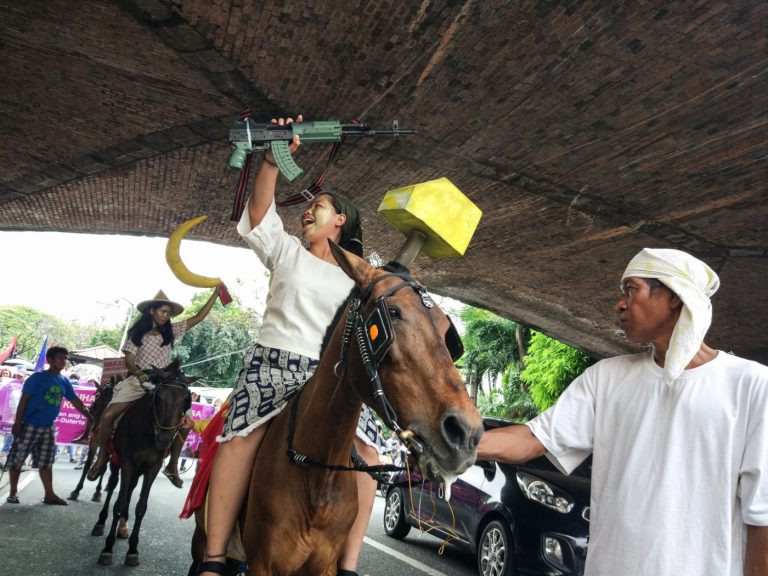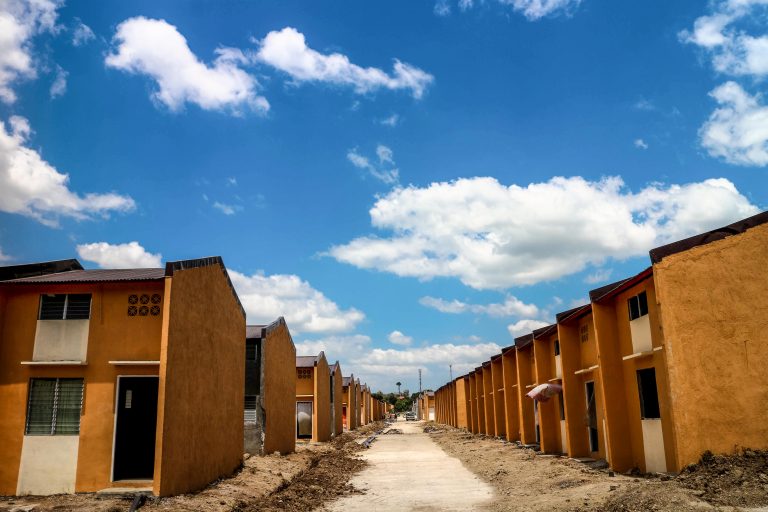Mindanaoan victims and eyewitnesses to human rights abuse committed by the police and military forces gave testimony in front of a horrified audience. This happened in a press conference organized by human rights alliance Karapatan and the International Coalition of Human Rights in the Philippines (ICHRP) on February 26 at the NCCP Office in Quezon City,
Among the most affecting accounts was the story of two boys who escaped from a failed extrajudicial killing attempt by soldiers belonging to the 71st Infantry Battalion of the Philippine Army.
Janry Mensis, 22, and Jerry (not his real name), 16, grew up in a farming community in Malamudao, Compostela Valley. Their parents were farmers, earning a living planting rice, banana and root crops on a small plot of land. In their respective families, both were middle children. Janry has seven siblings, while Jerry has eight. Like most poor families in rural communities, their parents could not afford to keep them in school. Both boys were only able to reach fourth grade.
Janry and Jerry are not related by blood. But they were friends, and both worked for a small local miner, digging excavated land for gold.
Like some teenagers from Rizal or Bulacan who liked to visit relatives and go to malls after getting their hard-earned salary, Janry and Jerry decided to go to the nearest big city – Tagum – to buy new clothes. It was Christmas season and they believed they deserved to get something new to wear.
They looked nothing out of the extraordinary. This was something they sought to emphasize in their testimony later on. They wore slim fit jeans, sneakers and black shirts: they looked like they were off to attend a Slapshock concert or to hang out on one of the Hypebeast hangouts in Metro Manila.
They said that they wore the same type of clothes, even on the night when they were taken by armed men.
After a day of buying new clothes and having fun in the city, the two decided to buy balut just a few walks away from the house of a relative in Tagum. Suddenly, they accosted by men whom they later discovered were from the 71st IBPA.
The men accused them of robbery. The two young men were too shocked to immediately respond.
“Dinampot kami dahil marami raw nangyayaring nakawan sa lugar (They picked us up because they said stealing was rampant in the area),” Jerry said.
The men took them to the police station where they were almost immediately cleared. Instead of being allowed to go home, however, they were bought to a military camp in Mawab, Compostela Valley. From being suspected as robbers, they were then accused of being members of the New People’s Army.
Janry and Jerry were bound and locked up for nine days, heavily beaten up by interrogating soldiers. They were not allowed visits from relatives and friends, and were not allowed legal representation. In fact, not one of their relatives was informed of the incident and they were detained not in a government sanctioned jail, but kept within the confines of a military ambulance parked inside a military camp.
For nine days, they were beaten continuously. Not an hour passed when they did not fear that it would be their last. Then around midnight of December 6, 2017, the two were forced by their captors to wear military uniforms, and board a military truck with some soldiers. They were driven to Brgy. Masara, still in Compostela Valley. They were hogtied and their mouths plastered with packing tape. Janry was able to positively identify the 71st IBPA commander Estevyn Ducusin who rode with them to Masara.
At Masara, the two were taken out of the truck.
“Tiniis namin ‘yung matinding takot at sakit. Sa isip ko, magpanggap na lang akong patay baka makaligtas pa ako (We endured great fear and suffering. In my mind, I had to play dead to survive),” Jerry said.
Even in their helpless state, the two young men were still violently strangled by the soldiers. They pretended to lose consciousness, then they felt themselves being pushed into a hole.
Inside the pit, they suddenly smelled kerosene. Soon, they felt the the gas being splashed all over their crumpled bodies.
As luck would have it, their military clothes were soaked in sweat that did not immediately ignite even after being doused with kerosene. In their frustration, the soldiers gathered dried leaves and threw them into the pit. Soon the pit was burning, and so were the two young men in it.
It took all of their will and strength to keep up the pretense of being dead. They struggled painfully against screaming out as the flames began to burn their flesh. They hoped against hope that the soldiers would think that the two were already dead, and would leave them.
“Sobra po ang sakit ng sinusunog ang katawan. Kahit gusto ko na magsisigaw sa sakit, hindi ko magawa kasi yung pagpanggap lang na patay ako ang pag-asa ko mabuhay (The pain of being burnt was excruciating. Even as I wanted to scream in pain, I could not because we were playing dead in order to have a chance to live),” Janry said. As he spoke, he kept touching his legs which were, it was explained later, scarred by third degree burns.
Only their determination to secure justice against the soldiers who attempted but failed to kill them – and the desperation to ensure that what they suffered would not be suffered by others – gave them the courage to retell the experience that would haunt them forever.
As soon as they sensed the soldiers gone, the two managed to break off the rope that tied them and carefully, painfully climbed out of the pit.
The distance that normally took three days to walk they covered in a few short but fear-filled hours of alternate running and fast walking.
“Nandoon na ang mga sundalo, may dalang tatlong aso kaya nagtatakbo uli kami. (Nagsimula kami) tumakbo bago pa sumikat ang araw, nakarating kami sa baryo bago alas-kuwatro ng hapon,” Janry said.
Janry and Jerry arrived in Malamudao before sunset. The relief their relatives experienced when they saw the two young men quickly disappeared when the two shared their ordeal. Janry’s father contacted human rights group Karapatan to seek help.
Jigs Clamor, Karapatan secretary-general, said that they can provide pictures and even the medico-legal report to prove the intensity of the torture Janry and Jerry experienced, the strangulation bruises and burns that the two sustained.
Janry sustained third degree burns in his body while Jerry strangulation marks are still visible on his neck.
Jerry celebrated his 17th birthday a few weeks after the event. He said that he only had one wish: for justice, and he was grateful to still be alive to reach another birthday.
Had it not for their quick thinking and presence of mind, the two young men would not have survived. They had the force of will and bravery to stand in front of audience and explain in detail the horrors that the Duterte and his security forces inflict upon the people of Mindanao with impunity, having declared martial law in Mindanao.
Not everyone is as lucky as Janry and Jerry, however.













































